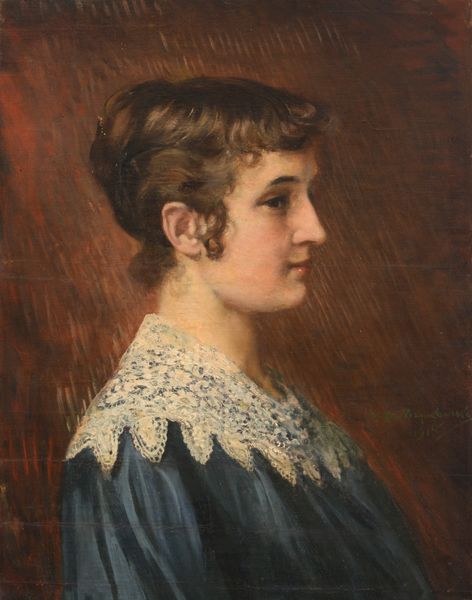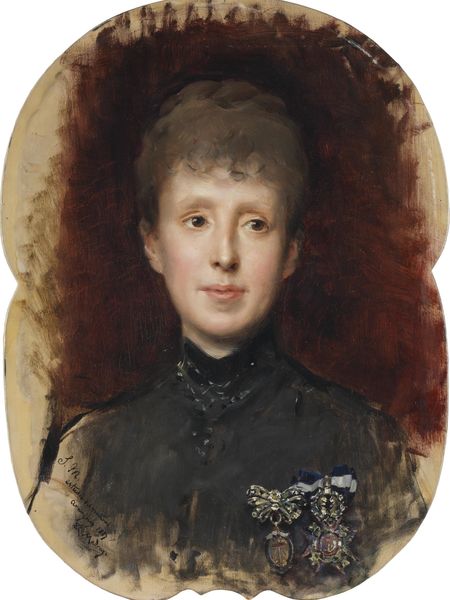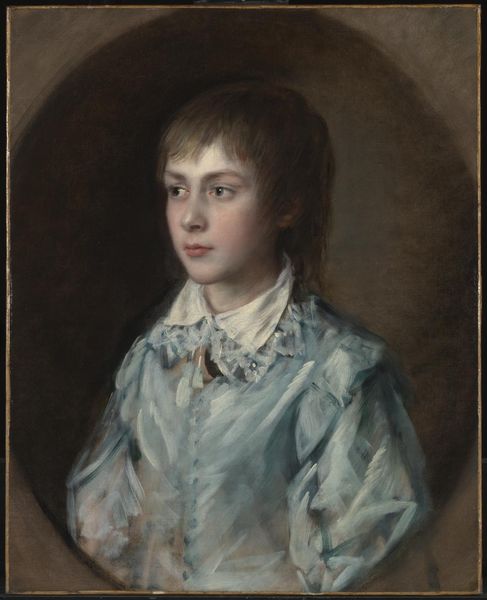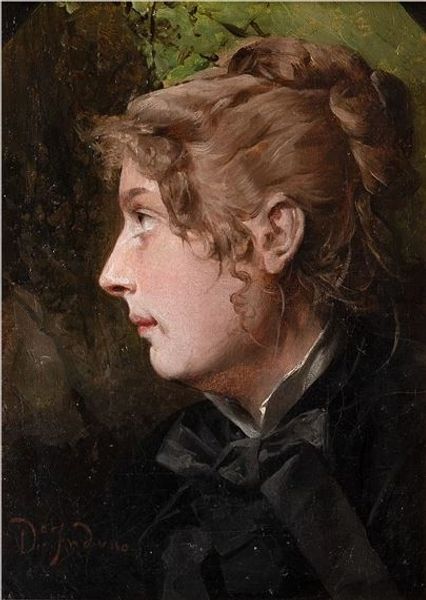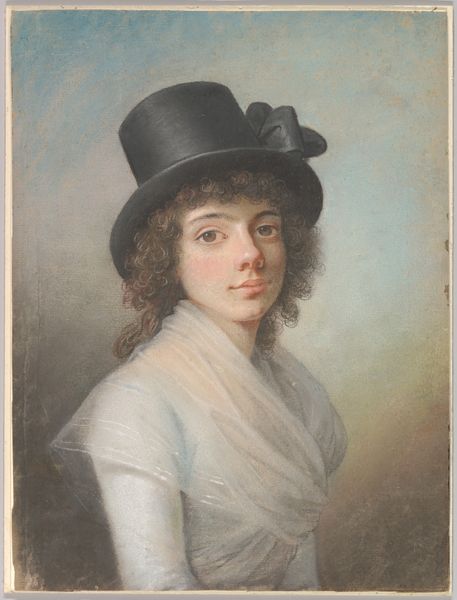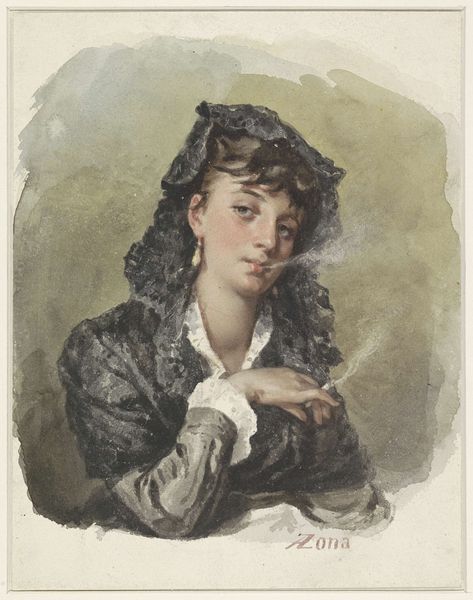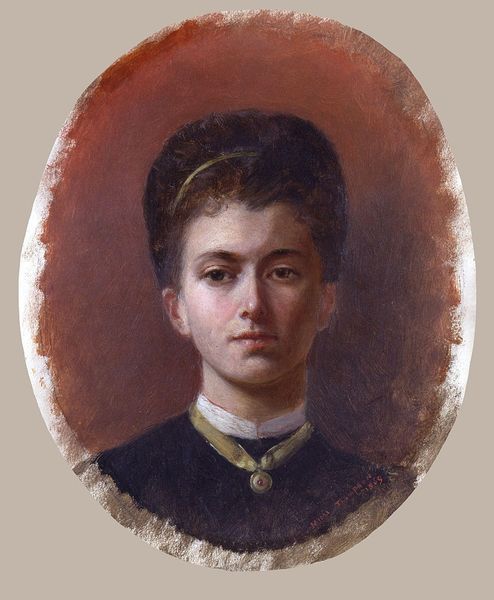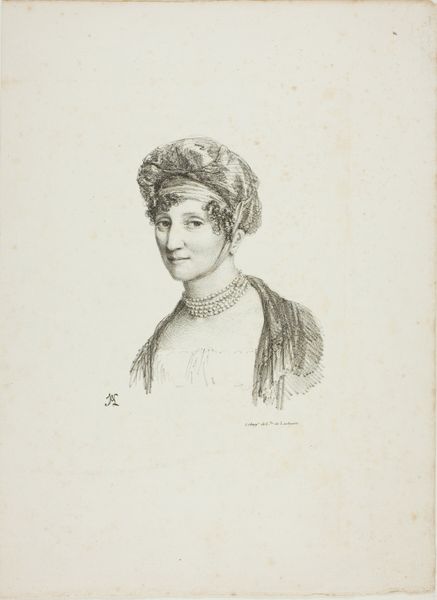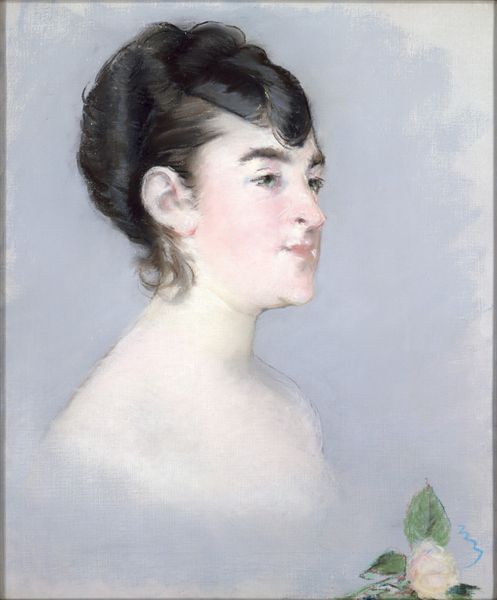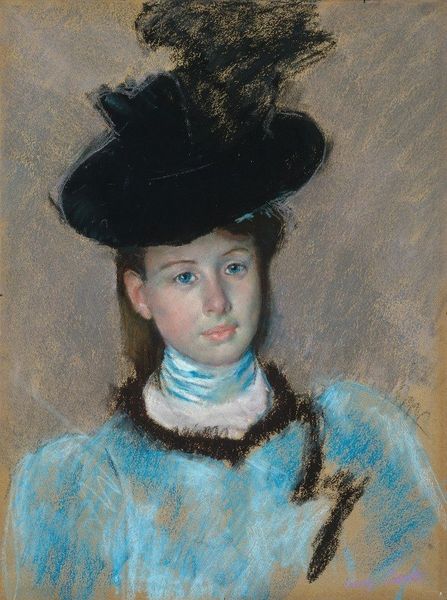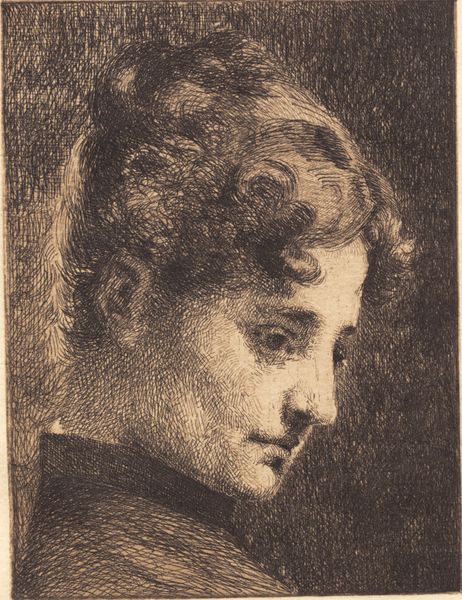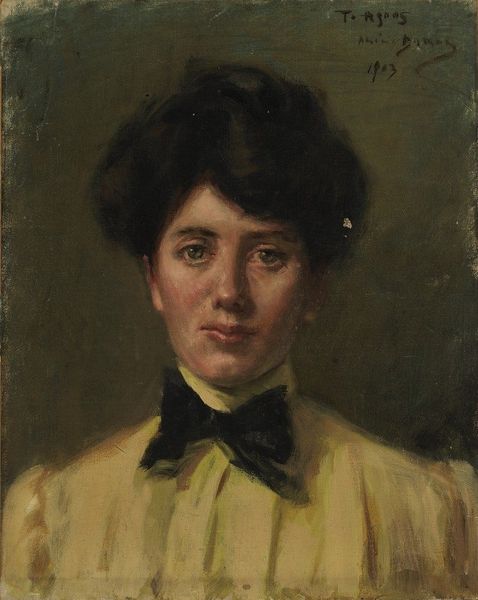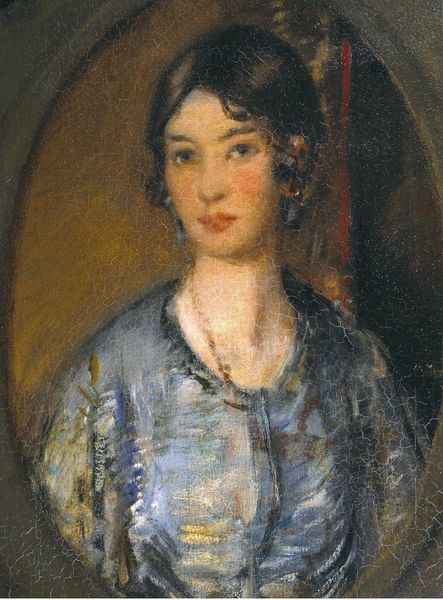
Emilie-Louise Delabigne (1848–1910), Called Valtesse de la Bigne 1879
0:00
0:00
drawing, painting, oil-paint
#
portrait
#
drawing
#
painting
#
impressionism
#
oil-paint
#
oil painting
#
intimism
#
portrait drawing
#
realism
Dimensions: 21 3/4 x 14 in. (55.2 x 35.6 cm)
Copyright: Public Domain
Curator: Here we have Édouard Manet’s oil painting from 1879, titled "Emilie-Louise Delabigne (1848–1910), Called Valtesse de la Bigne." It now resides at The Metropolitan Museum of Art. Editor: Immediately, I’m struck by the soft palette. It evokes a dreamlike quality, a fleeting moment captured in time, or perhaps, a strategic rendering to construct a myth. Curator: Indeed. Manet's approach to portraiture often reveals as much about the sitter as it does about the social milieu in which they operated. Valtesse de la Bigne was a well-known courtesan, actress, and social figure in Paris. Manet often painted subjects who pushed the boundaries of societal norms. Editor: Right, understanding Valtesse de la Bigne is crucial to interpreting the artwork. As a courtesan, she wielded a certain amount of power and challenged bourgeois notions of femininity. Was this a sympathetic portrayal? Is he glorifying her social position, or offering a critique? Curator: Manet never explicitly condemned or celebrated his subjects, however her elaborate clothing contrasts with the soft pastel-like ground. Editor: That opulent robe… is that brocade? It clashes dramatically with the wispy, almost ethereal treatment of her face and the background. There’s a deliberate tension between reality and fantasy. It’s a performance of identity, very consciously constructed. How might the art world have responded to her social status in portraiture? Curator: There were critics on both sides of course. Manet challenged the art establishment by representing modern life and modern personalities. The critics who embraced realism likely appreciated Manet's candid portrayal. He presented an unfiltered version of the belle époque. Editor: Her legacy is inevitably tangled with debates around women, representation, and the marketplace, which can shed light on the art, and Manet’s intentions. Curator: I agree, understanding Manet’s time and Valtesse de la Bigne's cultural impact enriches how we view the work. Editor: It does reframe our appreciation. Considering the artwork's context makes it an image with much to unpack.
Comments
No comments
Be the first to comment and join the conversation on the ultimate creative platform.
